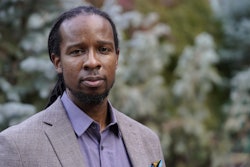Washington — With the national consciousness about sexual harassment at an all-time high, the rules about acceptable — and legal — behavior between the sexes are coming into focus.
What exactly are the rules? And is society in general — especially the male segment — more sensitive to the issue of what is sexual harassment and its impact on its victims? These and other key questions were at the heart of the issues discussed in the latest in a series of videoconferences held by Black Issues In Higher Education, “Sexual Harassment 1996.”
Discussing the sometimes controversial issue with the moderators were Dr. Michael Greve, executive director of the Center for Individual Rights; Beth Wilson, attorney and assistant provost at Columbia University; Ellen Vargyas, legal counsel with the U.S. Equal Employment Opportunity Commission; Emma Coleman Jordan, attorney, Georgetown University law professor and co-editor with Anita Hill of the book, “Race Gender and Power in America”; Dr. Anne Bryant, executive director of the American Association of University Women and just-named executive director of the National School Boards Association, and, via satellite from the University of Oklahoma, law professor Anita F. Hill.
“Many had given up believing that anything would ever be done about it,” Hill said of sexual harassment. The former EEOC staffer’s assertions during the 1991 Senate confirmation hearings for then-Supreme Court nominee Clarence Thomas about her relationship with then-EEOC director Thomas, helped elevate the subject in the public debates.
Five years later, sexual harassment remains a hot issue despite advances in political, economic and cultural spheres for women. The reason, according to videoconference moderators Kojo Nnamdi and Julianne Malveaux, is that the female is still sexually objectified at all levels of American society — especially in schools, the work place and the media.
“Most men think of sexual harassment as Tailhook, or street harassment but not of situations with themselves,” Nnamdi said. But sexual harassment is “the willful and unwanted sexual pursuit of another human being. And now that it has been made public we understand that sexual harassment has what can be a lifetime effect on the individual who is sexually harassed.”
Despite the efforts of many in society to downplay the significance and even the existence of harassment, “it exists and is real and remains a major impediment to advancement, equity and respect between the sexes. It is not a device used by streetfighter feminists to promote anti-male ideologies,” Nnamdi said.
And because sexual harassment is so pervasive, Malveaux said, we should not ignore it. “As a society, if we regulate faulty wiring in a factory, then we should regulate sexual harassment. It’s about the terms and conditions of work — it diminishes productivity and creates a hostile environment for workers and students who are entitled to go about their business without sexual harassment impeding their work,” she said.
Speaking from Norman, OK, Anita Hill said that prior to the hearing that catapulted her to forefront of the sexual harassment issue, her career path was leading toward commercial law.
Since the stormy Senate hearings in 1991, however, she has heard from many women around the world of all ages, backgrounds, and workplaces complaining of this problem, she said, explaining her decision to zero in on sexual harassment as a scholar. “It occurred to me the most important thing that I could do with my knowledge was to do research in this area, and so my focus has changed.”
Another outgrowth of the hearing was that EEOC complaints have increased threefold in a five-year period. Vargyas said studies are under way to see how often complaints happen in the work place. “No ore knows for sure but we all know it happens much too frequently,” she said.
The key reasons for the increase, she said, are that the national consciousness has been raised and the change in the federal law in 1991. Before the 1991 law the relief or remedy a person could ask for was very limited.
Bryant said the problem of sexual harassment doesn’t begin at the college level. The American Association of University Women (AAUW) conducted a study, “Hostile Hallways,” that showed sexual harassment begins as early as eighth grade for 81 percent of both male and female students.
Greve was the only panelist who suggested that the seriousness of the issue of sexual harassment is overblown. One of the negative outcomes of our raised consciousness, he said, is that some people are overly sensitive. “It is inherent in this sexual harassment crusade that it has no respect for free speech and no respect at all for due process.”
At one point dialogue became testy as he invited the panelists to come with him to his office — the same building where, he said, Hill was “coached by the best lawyers in the country” for her appearance before the Senate Judiciary Committee. Her testimony nearly derailed the Thomas nomination.
Hill said Greve expresses a common myth that women cannot be trusted to assess their own experience and their own reactions. But she said that the opposite is true. “Most women don’t make claims and that they tend to minimize the behavior and find other ways than complaining,” she said.
Greve said that often just being accused can ruin a person’s career and offers an accused person little choice except to admit an offense and make a settlement.
The other panelists responded that while there may be some unwarranted cases being filed, the vast majority are real cases and we should not be distracted by those who clearly believe that sexual harassment in an untruthful crusade.
Some practical tips were offered to help women to respond to sexual harassment:
* Communicate that the attention is unwelcome.
* Maintain a written record.
* Talk to other employees to see if they have encountered the same behavior.
* Report to the supervisor and ask that steps be taken to stop the behavior.
* Report through union, administrative or legal channels
COPYRIGHT 1996 Cox, Matthews & Associates
COPYRIGHT 2004 Gale Group
© Copyright 2005 by DiverseEducation.com


















